Steven Spielberg’s Jets/Sharks Rematch Dances on to Eventual Glory
DIRECTED BY STEVEN SPIELBERG/2021
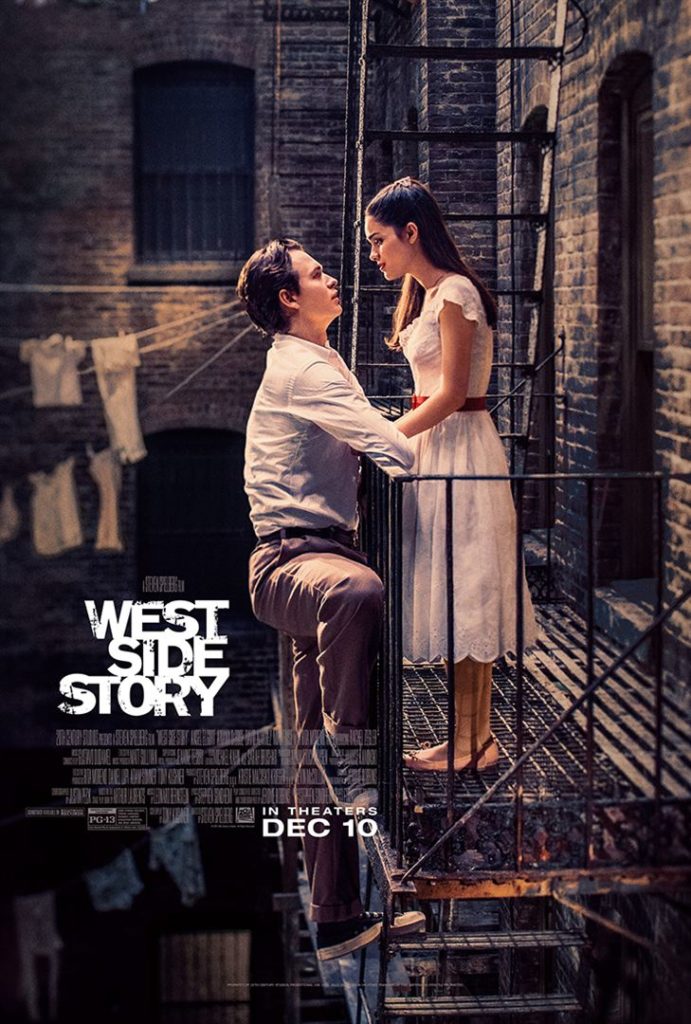
Taylor Blake: Everyone knows there never was a story of more woe than this of Juliet and her Romeo, but most of us know the story of Maria and her Tony is a close second.
Like in the 1961 film, Maria (Rachel Zegler) is a Puerto Rican immigrant living in New York City. Her brother Bernardo (David Alvarez) leads the PR gang the Sharks, which tiff with the white Jets for control of their neighborhood. Their leader, Riff (Mike Faist), wants to rumble to decide who owns the territory, but not before his best friend Tony (Ansel Elgort) makes tensions worse by falling for Maria.
West Side Story may be a tale of star-crossed lovers as old as time (or at least the 1590s), but nothing about this remake feels stale. Not that it was a given—the ‘60s Best Picture winner is one of the most transcendent musicals ever. While it missed opportunities for better cultural representation, it was a 10-time Oscar winning production featuring Jerome Robbins choreography and an iconic Rita Moreno performance. Why take a stab at recreating something when you’ll only be compared to that kind of legacy?
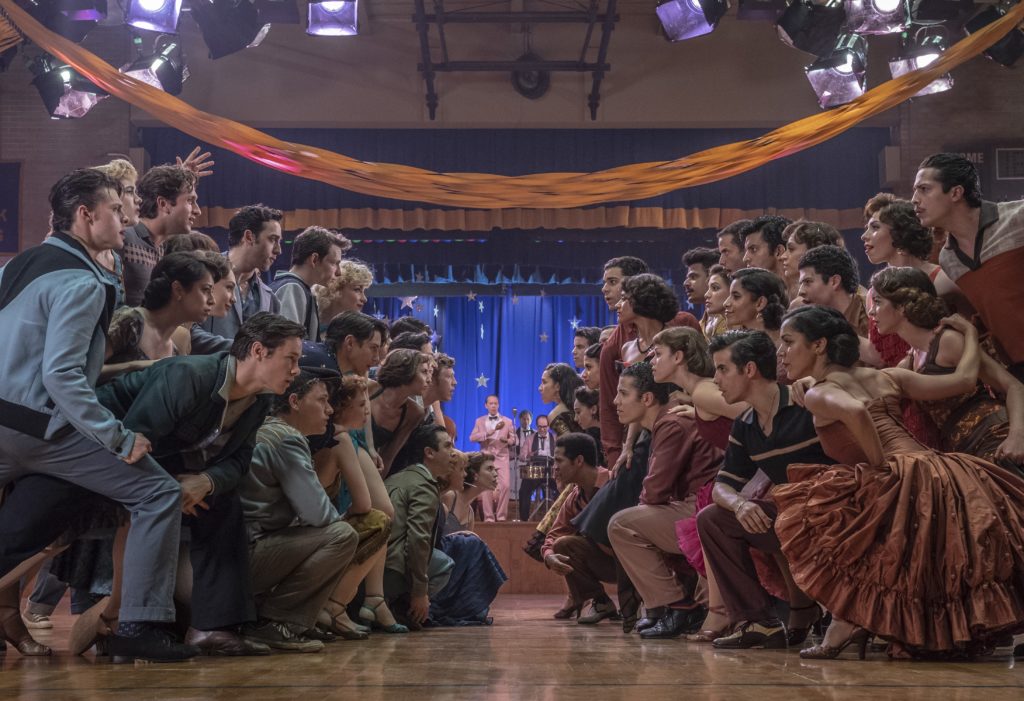
Leave it to Steven Spielberg to pull off an update that matches or exceeds the original film in nearly every way. (The first draft of this review went something like, “Wow, Steven Spielberg and Leonard Bernstein and Stephen Sondheim and Rita Moreno and Ariana DeBose are really good!” True, but not particularly interesting.) The music feels as fresh as I suspect it did in 1961, and the visuals are a collection of some of Spielberg’s most beautifully-composed shots yet. The hues are are more vibrant and the shadows more looming than Robert Wise’s. Instead of the balletic Robbins routines, the dancing is expressionistic. The gangs are climbing over fences, looking out of cages, and cramming into tight spaces. The camera roves the sets to make us feel boxed in with them, and the takes are long to let the cast showcase their range of motion and emotion. (No one thrives more than DeBose’s Anita, who commands “America” and “A Boy Like That/I Have a Love” with both her dancing and her eyes.) This story now unfolds in a gentrifying city leaving our characters behind, and though the Sharks wear warm colors and the Jets cool ones, all sweat beneath layers of dust and grime.
In short, the legacy of the classic film doesn’t weigh down this remake. Instead, Spielberg and screenwriter Tony Kushner have made it to fit it to their vision. The songs play in a new order, giving Tony and Maria time for a real date. Small tweaks bring new depth to characters we thought we knew, like a backstory that makes the secretly boring Tony more active and complex. (This isn’t the venue to discuss Elgort’s ongoing personal drama, but if it’s not a distraction for you, this is the best performance of his career.) Any criticism feels fleeting. The film is 10 or 15 minutes too long, but which Bernstein/Sondheim banger do you cut? Some character choices feel sudden, but that’s a Shakespeare problem. My only disappointment (a small one) is Faist never seems at ease as Riff, as if the shoes Russ Tamblyn left behind wear him instead of the other way around. Still, I’d like to see him and his charismatic crooked grin in another role where someone like Tamblyn doesn’t loom so large. We were lucky to live in a world with one great version of West Side Story—it’s a small miracle we’re now lucky enough to live in a world with two of them.
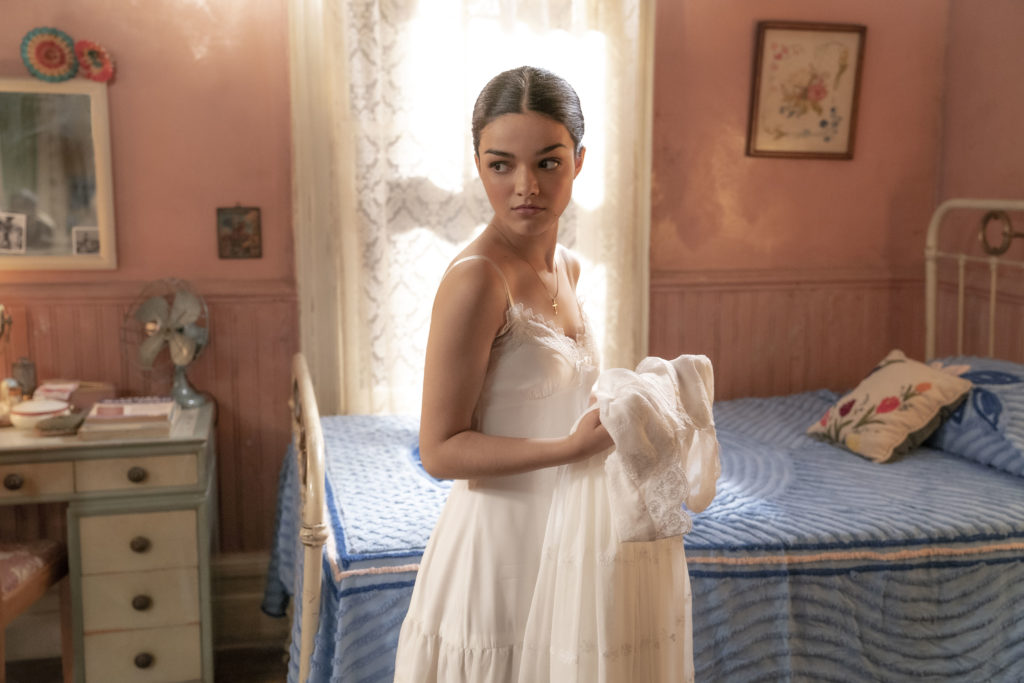
Jim Tudor: I agree with Taylor’s terrific take that this new version of West Side Story is also terrific. So much so that it has no trouble whatsoever in immediately putting to bed that giant question of “but why?” that’s hung over this film since it was first announced. That question has certainly been formidable, and not at all unjustified. As pointed out above and in many other well/deserved glowing critical takes, the 1961 Robert Wise-helmed original film remains a rousing gut-punch of Shakespeare-gone-urban-contemporary and musical theater-gone-macho.
Mindful of how the original film’s portrayal of Puerto Ricans by Caucasian actors in makeup has plummeted on the meter of social acceptability to the level of zero, Spielberg’s mission to salvage what he rightly proclaims as an otherwise excellent piece of work is commendable. I suspect that in the span of, what?, the political pressure-cooking five or six-plus years that it took to get this new version of WSS from active development to the big screen (where, in a better world, it would’ve been far more widely seen) took their toll on the progressivism at the heart of it. That is to say, despite Spielberg and Kushner’s own best intentions, there’s no escaping that they themselves are white men opting to tell what is largely a Puerto Rican story. When they green-lit this, the controversy of who ought to tell what stories was simply not as potent of a societal concern. (Never mind that West Side Story’s stage originators nor Shakespeare himself were also white men…). There’s no getting out from under that one.
But, as the sharks circled (not those Sharks) to bite at the sad box office crash-and-burn of this film, representation behind the camera didn’t seem to be getting much if any blame. If I were to guess the answer to this newer “Why?” of Spielberg’s West Side Story, (and I guess I am,) it wouldn’t have much to do with the names Steven Spielberg, Tony Kushner, or even Stephen Sondheim, who’s death came in eerie proximity of the film’s rejection. I would guess that it’s simply that it’s West Side Story– polished and tweaked, yes… but also still very much an older show. An older show during Covid. Should the older folks who harbor firsthand nostalgia for the older show/1961 movie have risked their health by going to a movie theater? Nah.
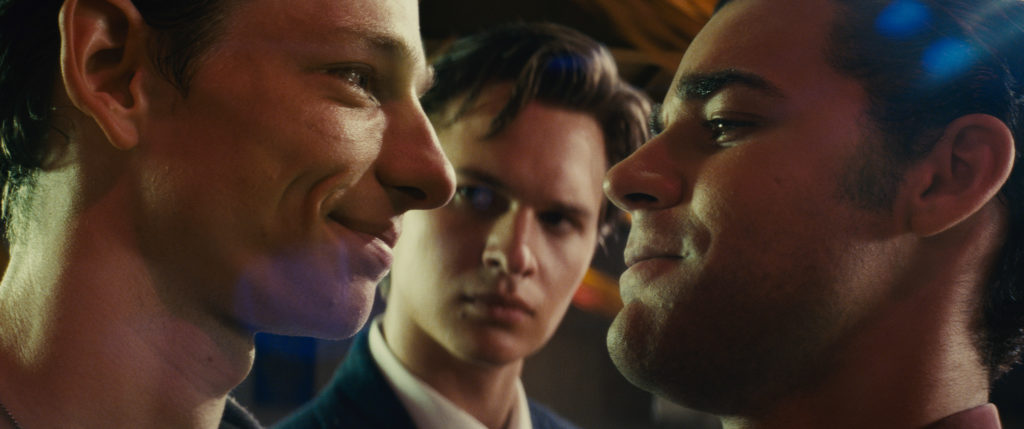
The point now has to be that Spielberg has in fact not crafted a failure. For all the man’s rich accomplishments, making a top-notch musical is a new entry on that list. By simple virtue of being a part of Spielberg’s filmography, it will be forever prominent on the table for consideration in film history. Meaning, West Side Story isn’t going away. And as time goes on, whatever representational infractions may arise around it, history will like look favorably. (Just as we continue to look favorably on Robert Wise’s version, with the necessary asterisk). Then, as far Spielberg’s stated intention of celebrating the original more so than trying write over it- mission accomplished.
So, specifics…. Like most any musical, West Side Story is at its best when a number is going full bore. Those introspective moments of one or two people emoting through song are fine when they work (like the famous balcony scene that must be here, or Rita Moreno being granted a particular song that formerly belonged to another character), but I’ll confess to often finding such scenes maybe dull, or at least long in the tooth. When the frame goes wide and tempo gets furious and the cast clicks into perfect synch with one another and the music… that’swhy I’m there. West Side Story does not miss with any of its numbers, but my word… its rendition of “America” might be my favorite scene in any movie last year.
Taylor takes issue with Mike Faist’s Riff, but I actually nominated him in the St. Louis Film Critics Association 2021 film awards for Best Supporting Actor. Russ Tamblyn is of course one of the greats (and what an incredible career that guy has had), but I had no problem with the new guy. I thought Faist brought much needed heart and presence to the film (shades of Spielberg fave Eddie Deezen), which is what I look for in supporting players. For me, that only leaves Taylor’s comments about the slightly too-long running time. That’s stage musical adaptations for ya, though. I agree wholeheartedly with both the observation and the shrug in regard to it. Indeed, what the heck can you cut? Nothin’!
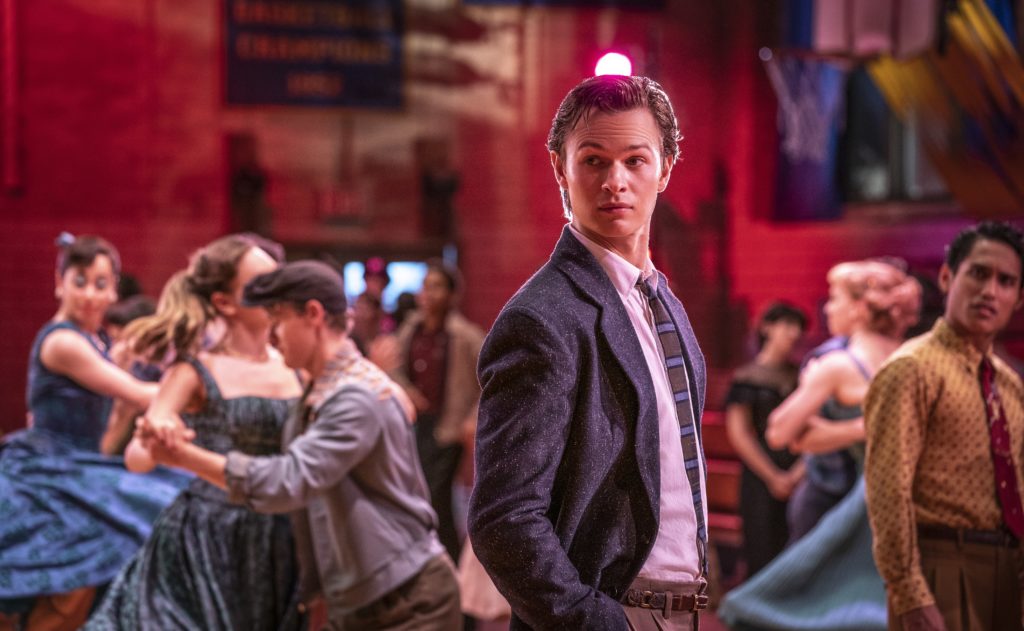
Finally for me, I’ll indulge my fascination with Spielberg’s and Kushner’s decision to reframe West Side Story a few years earlier as to incorporate the coming of Lincoln Center (which opened in 1955; West Side Story premiered live in 1957). Lincoln Center for the Performing Arts has, of course, been a prominent proponent of all manner of cinema for decades. Its own succumbing to Covid meant not only the online-ing of its vital film program, but also the ceasing of its magazine Film Comment, the best film periodical we had. No one can dispute the viability of broader artistic good that Lincoln Center has brought to New York City, and the world.
Yet, gentrification is gentrification, and this movie knows it. Hence, there’s a palpable, subtle, unsolvable, intentional unease baked into West Side Story 2021. It’s this sort of thing that make movies extra compelling. I’m grateful that Spielberg and Kushner had the gumption to look a major engine of their own art forms’ vindication right in the eye. The tension adds fuel to the futile feud between the Jets and the Sharks. It’s that turf war that the preoccupies the males of the piece, despite the fact that no matter who wins and how many of them die, in the end, they’re getting a performing arts center- and that cannot be stopped. The fact that said arts center bears the name of The Great Emancipator should not be overlooked here. Not only is there a blunt irony that something called “Lincoln Center” is heating up a local race war, but let us not forget that Spielberg and Kushner gave us their own warts-and-all take on President Lincoln a decade ago. (Everyone should also see that movie).
If Spielberg’s career really is coming full circle (he’s reportedly making his own autobiography, for crying out loud), then it’s also appropriate (if not nearly as poignant) that he’s back to Sharks- albeit a very different kind. If West Side Story 1961 was a movie that made Spielberg, it stands to reason that the visionary and very awake West Side Story 2021 that Spielberg has made will go on to generate equally as much if not more inspiration.
– Jim Tudor

